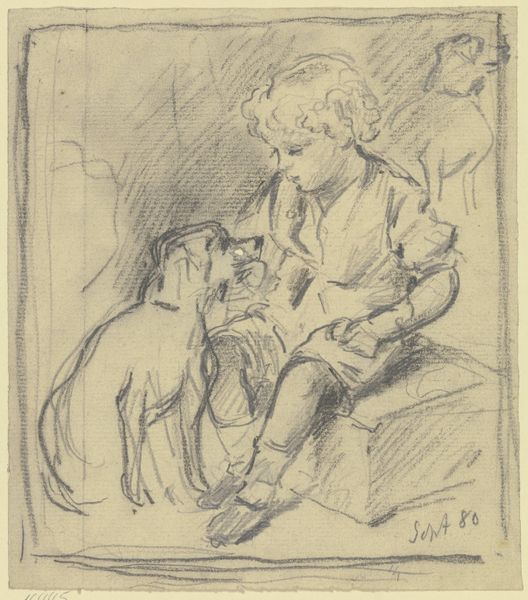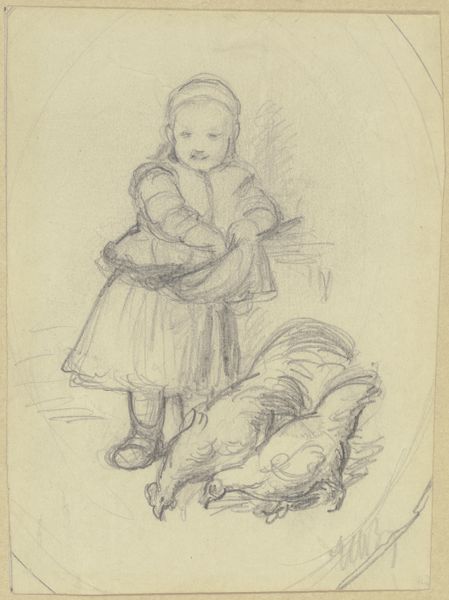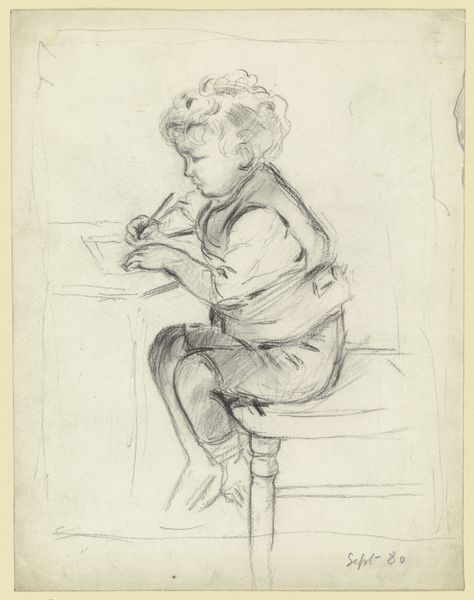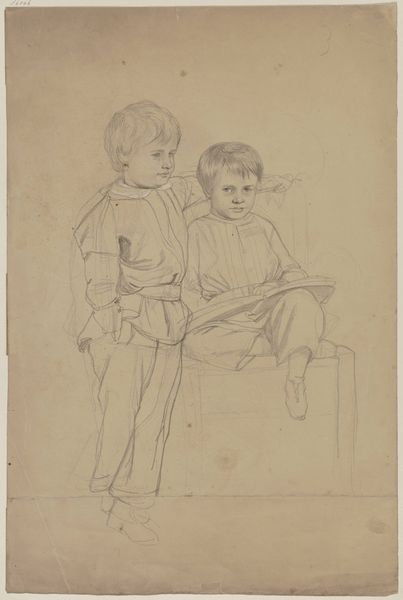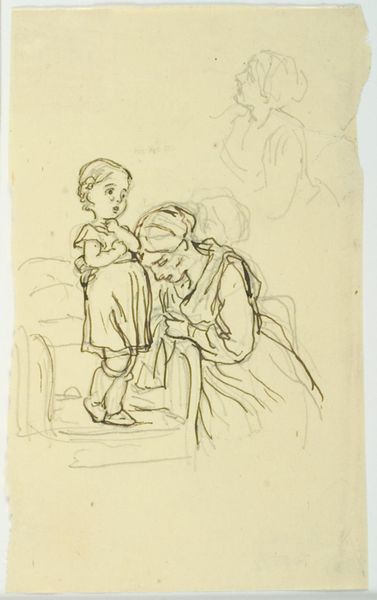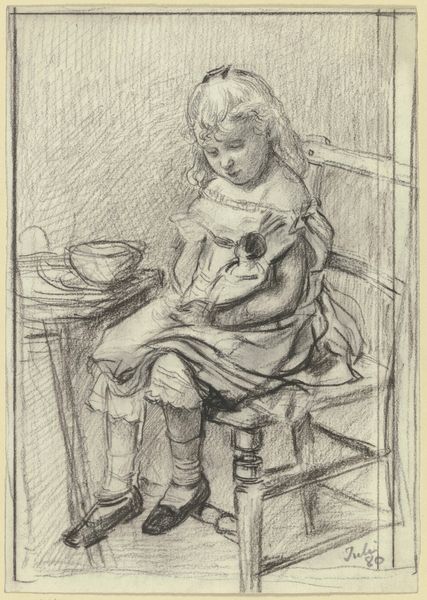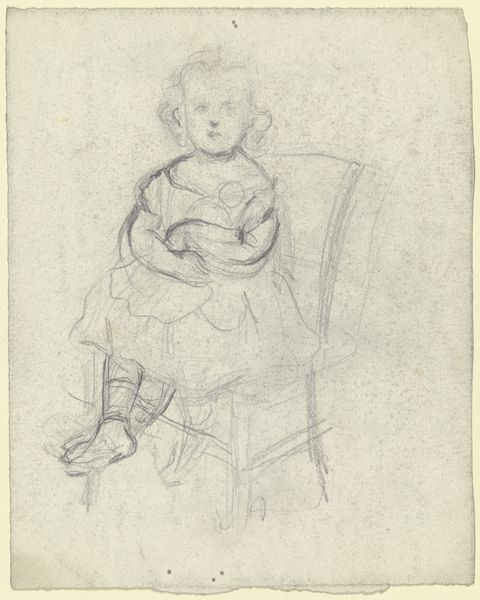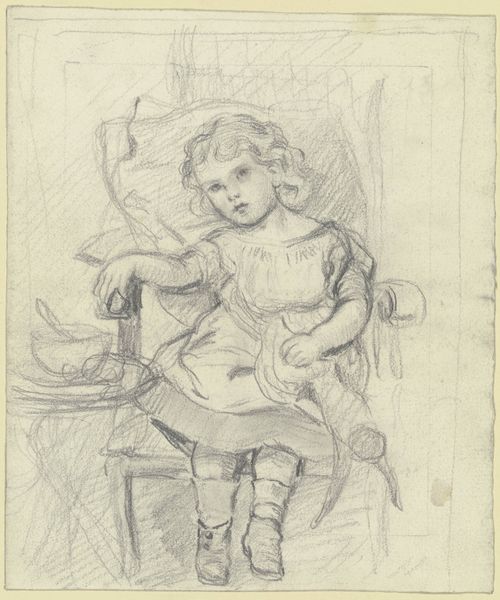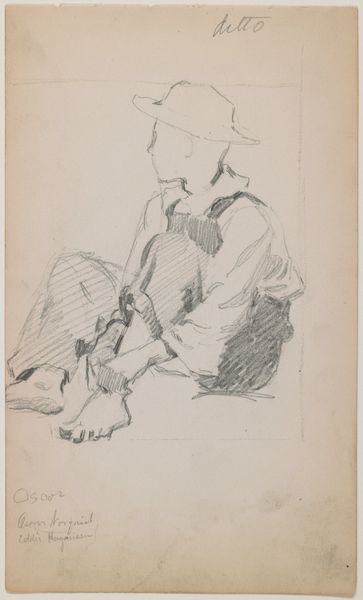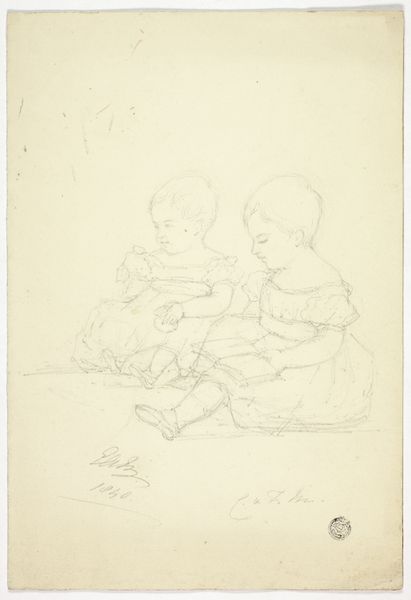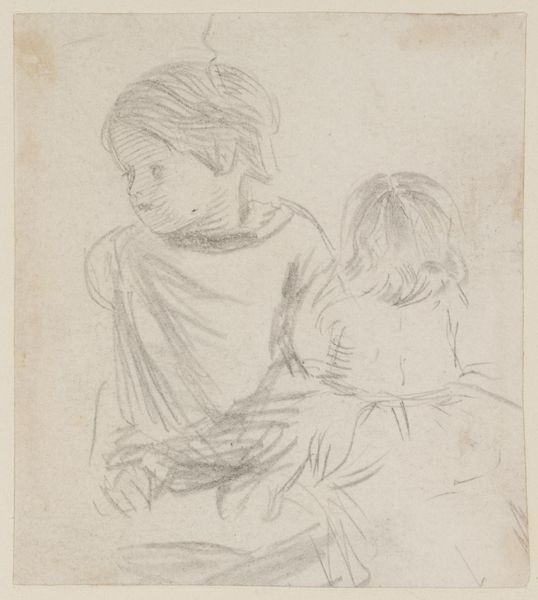
drawing, pencil
#
portrait
#
pencil drawn
#
drawing
#
16_19th-century
#
pencil sketch
#
figuration
#
german
#
pencil drawing
#
pencil
#
portrait drawing
#
realism
Copyright: Public Domain
Editor: Here we have Otto Scholderer's 1880 pencil drawing, "Sitting Boy with Sitting Dog." It feels intimate, almost like a snapshot of domestic life, but there's a formality to the boy's pose. What do you make of the social dynamics presented here? Curator: The charm of this work really lies in its straightforward depiction, wouldn't you say? However, let’s think about this piece historically: in 1880, academic portraiture was experiencing changes under forces such as new money entering art collecting circles and a broader trend of Realism and Impressionism influencing public tastes. In what ways might a sketch like this participate in these trends? Editor: I see your point! I hadn’t considered the public appeal in terms of Realism; how would a sketch fit the Realist movement? Curator: Realism focused on everyday subjects as a response against romanticised history paintings of the time. Pencil sketches, which could record an artist's observations quickly and directly, were often used to study figures as studies, thereby helping to give even history and allegorical paintings a realistic immediacy that paintings didn't have previously. This particular artwork provides insight into Realist practice, showcasing Scholderer's commitment to unidealized representation as well as his method. Is there anything in particular about the rendering of forms here that stands out to you? Editor: Now that you mention it, there’s something so immediate about the way he captured the boy's posture and the dog's attentiveness. It’s almost documentary-like. It doesn't hide the medium, either, it lets the process speak. Curator: Exactly. And by choosing such a candid scene from life rather than constructing an elaborate tableau, Scholderer asserts the inherent artistic merit found in ordinary moments. Looking at it today, this intimate scene invites us to ponder how the representation of childhood and domesticity evolved under changing artistic and societal expectations. Editor: This makes me look at it in a different light now. The sketch transcends its apparent simplicity and gives us insight into the culture and politics of the time. Curator: Precisely, and hopefully offers us the realization that these values influence and shape how we experience and comprehend such simple human moments as the friendship between a child and their beloved animal.
Comments
No comments
Be the first to comment and join the conversation on the ultimate creative platform.
